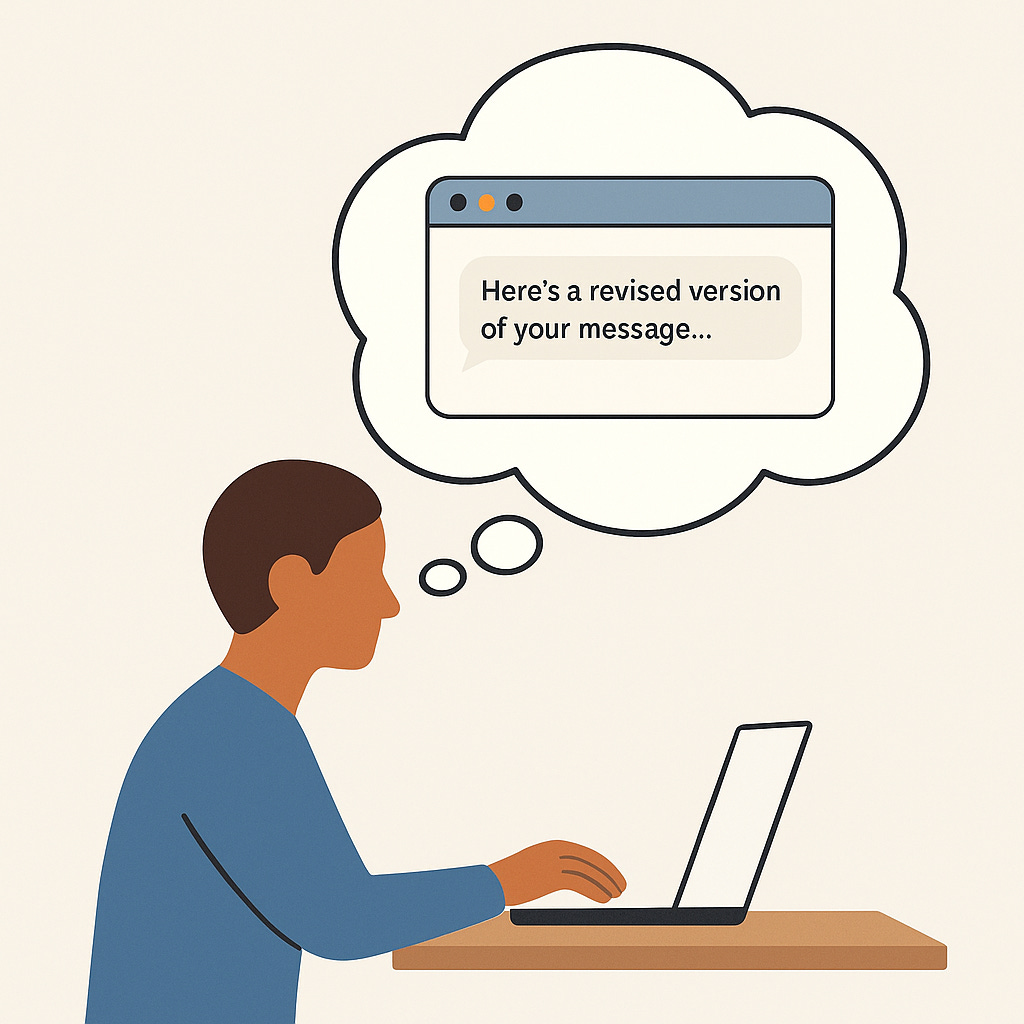On the Quiet Restructuring of Thought in the Age of LLMs
How language models became the first voice we hear, and what that means for agency, truth, and the shape of human judgment.
It used to start with me. If I had to make a decision, write something important, figure out how to say what I meant—I’d sit there and think. Maybe jot notes. Maybe search. Whatever came out, it was mine to wrestle with.
Now, almost without noticing, the model speaks first.
I still shape the final output. But I rarely start from scratch. Whether it’s a draft email, a calendar summary, a message I’m not sure how to word—the first version often comes from a model. And I’m not alone.
As of 2025, more than 250 million people interact with large language models every day. ChatGPT, Claude, Gemini—they’re built into phones, laptops, search engines, office tools, browsers. Over 90 percent of Fortune 100 companies use LLMs somewhere in their daily workflows. These aren’t experimental tools anymore. They’re infrastructure.
This shift happened fast. In less than three years, LLMs went from a curiosity to the default starting point for writing, searching, and problem-solving. But more than that—they’ve become the default way of framing thought. You don’t just ask what’s true. You ask how to say it, how to feel about it, what direction to take next.
It doesn’t feel dramatic. It feels helpful, fluent, low-friction. That’s exactly why it’s working. The machine doesn’t force itself into your thinking. It offers to go first.
And more and more, we let it.
The Answers Feel Neutral. They're Not.
Most people assume the model is neutral. After all, it doesn’t argue. It doesn’t shout. It replies in full sentences with polite hedging and calm reasoning. It sounds reasonable.
But these models aren’t neutral. They’re designed. Every answer is the result of a training process, a set of weights, and a series of filters that determine what gets emphasized, softened, or skipped altogether.
LLMs don’t know things in the way a person does. They predict what a good answer should sound like based on all the text they've been fed. That includes bias, contradiction, consensus, and noise. When you ask a question—especially a complex one—you’re not getting an objective truth. You’re getting a statistically likely completion that fits the model’s training and reinforcement priorities.
And those priorities vary. Some models sound cautious. Some are more assertive. Some are tuned to avoid conflict, some to lean on high-confidence generalizations. They’re not all the same. But they all shape how we ask questions and interpret answers.
This is where things get subtle. It’s not just about right or wrong. It’s about what feels like the right tone. What seems balanced, mature, or socially acceptable. If the model consistently rewrites your message to sound softer, less direct, more deferential, that starts to shape how you communicate. If it suggests a certain way of talking about politics, relationships, identity, or ethics, and you start copying that tone—that’s not just output. That’s influence.
You can still disagree with the answer, but you have to notice first that there was an angle. And when the model is the first voice you hear—over and over—it gets harder to remember what your own voice sounded like before it.
Whoever Controls the Model Controls the Frame
Language models seem like public utilities, but they aren’t. They’re owned, tuned, and updated by a handful of private companies, and their outputs are shaped—deliberately or not—by decisions those companies make about training data, alignment, safety policies, and incentive structures.
When you ask a question, you’re stepping into a system with layers you don’t see:
System prompts that shape tone and guardrails
Reinforcement learning tuned by contractors, often trained to optimize for specific values
Safety filters that suppress or rewrite certain outputs
Memory scopes that decide what context the model remembers and what it forgets
These aren’t conspiracies. They’re product design choices. But they add up. A model trained to avoid legal liability will steer away from anything that sounds risky. A model aligned for brand safety might downplay nuance in favor of easy, uncontroversial phrasing. A model built for enterprise will reflect the speech norms of HR departments and PR teams.
The result is a particular voice that starts to feel like “how smart people talk.” Measured, helpful, emotionally regulated, always plausible—but not necessarily true, and definitely not neutral.
And here’s the real shift: we’re not just interacting with these systems. We’re adapting to them. Because they write first drafts. Because they rewrite your tone. Because they autocomplete your thoughts.
It’s the same playbook that played out with search engines. Google didn’t just rank results—it shaped what people saw, what they clicked, what they thought was valid. Over time, winning search meant winning visibility. Now, it’s not about clicks. It’s about completions.
Whoever controls the model controls the frame. Not just what people see, but what questions they ask, what words they use, and what ideas feel natural to them.
That’s not a hypothetical power. That’s happening in real time.


